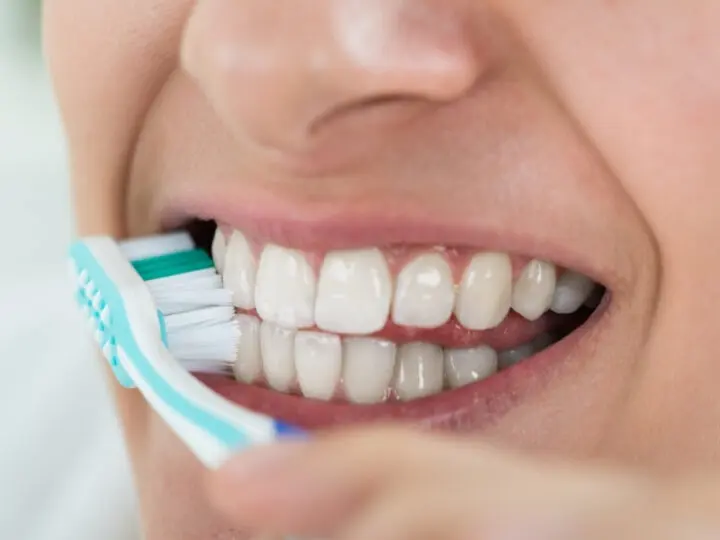Brushing: Tips and Recommendations
Proper brushing is the first step in maintaining healthy teeth and gums and only requires 2 minutes.
Here’s an example of an effective way to brush:
- For the outer tooth surfaces, place the toothbrush at a 45 degree angle toward the gum lines.
- Use a circular motion.
- Use this same motion to clean the chewing and inner tooth surfaces.
- To clean the inner front tooth surfaces, hold the brush upright and use gentle up and down strokes with the tip of the brush.
- Don’t forget to brush along the gum line, and make sure you reach those teeth right at the back.
- And while you’re at it, give your tongue a brushing – it’ll help keep your breath fresh!
FAQs About Brushing
1. Is Brushing Twice a Day Enough?
Brushing is important, but it’s only part of the program.
Did you know if you don’t floss, you’re leaving as much as 40% of your tooth surfaces untouched and uncleaned? A two-step process of brushing and interdental cleaning is the key to helping maintain healthy teeth and gums throughout your life.
2. What Should I Look For in a Toothbrush?
Choose a toothbrush with a brush head design that helps you to get to the hard-to-reach places of your mouth. Your toothbrush should also have soft bristles that are gentle on your teeth and gums.
3. Toothbrush Replacement, Is It Good?
Studies have shown that a new toothbrush removes up to 30% more plaque than one that is 3 months old.

FAQs About Toothbrushes
1. What About Power Toothbrushes?
Newer designs that incorporate advanced technology remove plaque more effectively than manual toothbrushes and are reliable and safe to use.
When using a power toothbrush, refer to the brushing instructions supplied with your toothbrush. Here’s an example:
- When using a power toothbrush, make sure you guide the brush head slowly from tooth to tooth, following the curve of the gum and the shape of each tooth.
- Hold the brush head in place for a few seconds before moving on to the next tooth.
- Don’t forget to reach all areas, including the inner and chewing surfaces, and behind your back teeth.
- Direct the brush head along the gum line. It isn’t necessary to press hard or scrub. Simply let the brush do all the work.
2. Are Interdental Brushes Good?
If you have widely spaced teeth, braces, bridges or implants, you may benefit from an interdental toothbrush. This toothbrush has a very small tapered or cylindrical head with fine bristles.
3. Interdental Wood-sticks
This is a triangular-shaped stick made of wood, used to help clean in between your teeth and massage your gums.
Is there anything else I can do?
- Keep sweets and sugary foods to a minimum. Instead, choose sugar-free foods for snacking. Good choices include vegetables, fresh fruits, bread and plain popcorn.
- Don’t smoke or use tobacco. Tobacco stains the teeth and the ‘yellowing’ effect on teeth cannot be removed by brushing alone. Your dentist can recommend other options, such as teeth whitening for removing these stains.
- Cut down on carbonated soft drinks. Many, including diet soft drinks, contain acids that can damage tooth enamel.
- If you can’t brush right after eating, a piece of sugar-free gum is a good substitute. That’s because chewing gum increases your saliva, which is the mouth’s built-in defence system to neutralise plaque acids against the development of harmful plaque.
Regular Dental Check Ups
Regular dental check ups are vital for preventing dental issues and maintaining optimal oral health. Visiting your dentist art FirstBite Dental at leat twice a year allows for early detection of potential issues, such as cavities or gum disease, and also it’s a great opportunity to get done a professional general teeth cleaning.
Arrange an appointment right now
Start the process of achieving a better smile today by arranging an appointment. Just call us or if out of hours use our simple request a callback from and we will call you back when we are open.
Call 9379 1893
"*" indicates required fields